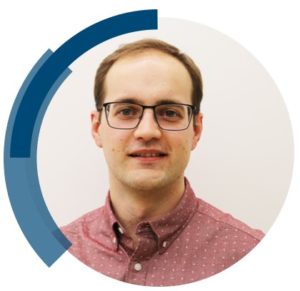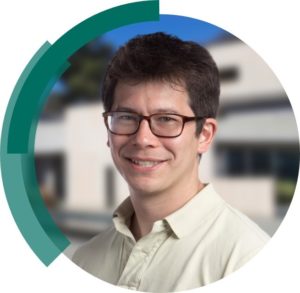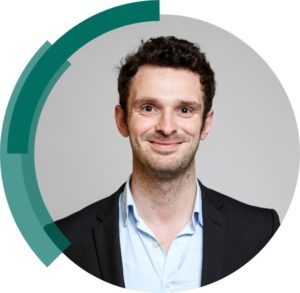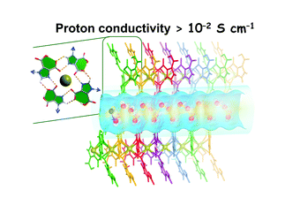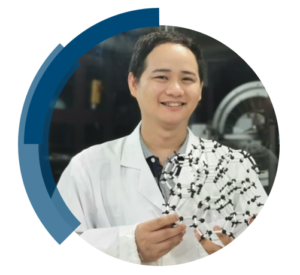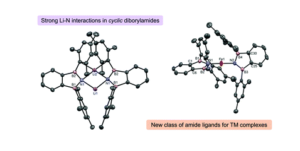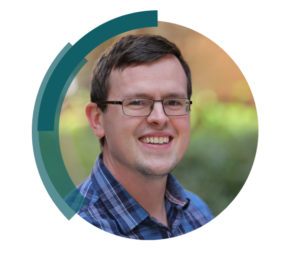We are excited to share the success of Samuel Jones’s first-time independent research article in ChemComm; Deoxyribonucleic acid polymer nanoparticle hydrogels – Chemical Communications (RSC Publishing)’ included in the full milestones collection.
Read our interview with Samuel
What are the main areas of research in your lab and what motivated you to take this direction?
Research in my lab focuses on material/virus interactions with a specific focus on developing biocompatible virucidal materials and viral detection systems. I completed my undergraduate degree and PhD in Chemistry, so it is often a surprise to others that my research is now so closely linked to virology. However, the main focus of my PhD was the supramolecular assembly of nanoparticles and viruses are the ultimate self-assembled nanomaterial. Viruses can be thought of as non-living, making them merely an nanoscale assembly of genetic material, proteins and (in some cases) lipid envelopes. The self-assembly of these complex structures inside cells in fascinating but by treating virions as supramolecular assemblies it has been possible to design novel, destroy on contact, antivirals.
Can you set this article in a wider context?
Hydrogels are used in a wide array of research fields from contact lenses through to drug delivery systems. Physically cross-linked, and notably polymer-nanoparticle (PNP), hydrogels have been used for a wide range of application due to their dynamic nature and ease of manufacture. A gel like the one we published on here, made of abundant and cheap constituents that self heals, releases cargo and degrades upon addition of DNase has a broad scope of applications, including in drug delivery and tissue engineering.
What do you hope your lab can achieve in the coming year?
Current work in my lab is focussing on developing the next generation of broad-spectrum biocompatible virucides and showing that they have significant potential for the real-world treatment of viral infections. We are hoping to publish on this and the development of new viral detection and sensing systems within the next year. This year will also see the first PhD student graduate from my group, which will be a very exciting time.
Describe your journey to becoming an independent researcher.
As part of my undergraduate degree (MChem with professional Experience) at the University of Warwick, I spent 3 months in the research labs of Dr. Adrian Blackman at the University of Tasmania, Australia. It wasn’t until this period that I had even considered going into research, yet after my first real taste of scientific research, I loved it. I returned to Warwick to complete my degree, undertaking further research in the lab of Prof. Stefan Bon and my love of research grew. This was also where I saw first hand how to successfully run a research group.
From there, I joined the University of Cambridge in the group of Prof. Oren A. Scherman. The 4 years of my PhD were some of the best in my research career to date. I made life long friends, worked on interdisciplinary research with groups from across Europe and was fortunate to travel to many countries for research meetings and conferences. I was afforded a great deal of independence during this time and relished the opportunity to work collaboratively on new projects and ideas. I was also actively involved in the supervision of students from lab demonstrating in 1st year natural science labs through to supervision of masters students projects. I found that I really enjoyed the teaching and mentoring opportunities these roles afforded me.
Marrying the summer before my thesis submission and defending not long after returning from honeymoon, I was ready for my next research challenge. My new wife and I made the move across Europe to Switzerland. I joined the group of Prof. Francesco Stellacci to work on chemotactic nanomaterials, initially for a one year period. We both loved our time in Switzerland, and the Stellacci group, so much that we ended up staying for three years, had our first child and embraced the Swiss lifestyle as much as possible. During this time, my research focus shifted to the development and testing of virucidal materials, as I became fascinated with these non-living biological nanoparticles. I worked alongside some great scientists who were always open and willing to share knowledge and experience, ultimately allowing us to work together to produce novel antivirals.
When I was offered an independent fellowship at the University of Manchester, I was delighted and looked forward to bringing all my knowledge and experience together to produce my own independent research and train the next generation of scientists. Although the process of establishing an independent research group has its ups and downs, I would not change it. My research group currently consists of 8 PhD students and one PDRA and working with each of them to develop their own research is a joy.
What is the best piece of advice you have ever been give?
Maybe not direct advice but over the course of my research career, I’ve learned the importance of a healthy work-life balance. At times during my career, the balance was not always the healthiest and over longer time periods this can have a negative impact. Ensuring that I take time to see friends, be with family and exercise are just as important as any work I may have to do. This is something that I now promote with my own students and I hope they are better off for it.
Why did you choose to publish in ChemComm?
I have been a long time reader of ChemComm for the excellent and diverse range of manuscripts it publishes. My first ever research article was published in ChemComm, as part of an Emerging Investigator issue and we were fortunate to be able to provide the cover image there also, just like this paper. The broad-audience and communication format made it a good fit for this research and I hope to be able to publish with the journal again in the future.
Explore more ChemComm Milestones news and updates on our Twitter: @ChemCommun


